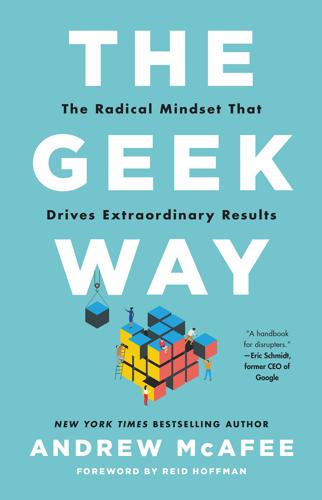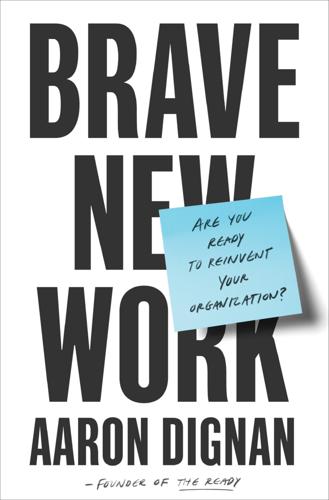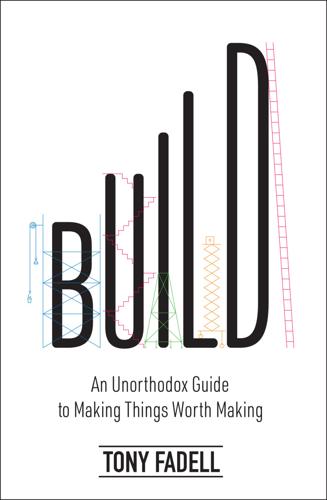Simple Sabotage Field Manual
description: sabotage book published by OSS in 1944 (at the end of WWII) and used later by CIA, united States intelligence services, compiling technics used by anarchists and communists against nazis.
4 results

The Geek Way: The Radical Mindset That Drives Extraordinary Results
by
Andrew McAfee
Published 14 Nov 2023
CHAPTER 5 Ownership Tearing Down the Giant Machinery Operated by Dwarves Bureaucracy [is]… a heavy curtain drawn between the right thing to do and the right person to do it. —Honoré de Balzac If you want to help win the war, inflict standard corporate operating procedure on the other side. That’s a conclusion you’re likely to reach after reading the Simple Sabotage Field Manual, which was produced in 1944 by the US Office of Strategic Services (the predecessor of the CIA). When I first heard about this document I thought it was an urban legend, but it’s real. It was declassified in 2008 and is now discussed on the CIA’s website. The manual was aimed at people living in Norway, France, and other countries occupied by the Nazis during World War II.
…
Never permit shortcuts to be taken in order to expedite decisions… Be worried about the propriety of any decision—raise the question of whether such action as is contemplated lies within the jurisdiction of the group or whether it might conflict with the policy of some higher echelon… Multiply the procedures and clearances involved in issuing instructions, paychecks, and so on. See that three people have to approve everything where one would do. Sound familiar? Many companies’ current practices seem like they were copied straight from the Simple Sabotage Field Manual. If that sounds like an exaggeration, let’s watch Jennifer Nieva try to get her job done. In 2005, Nieva was working as a manager at Hewlett-Packard. She was put in charge of a project for which she needed to spend $200,000 on outside consultants. As she describes it: The consultants were available now, but if I waited too long, they’d be reassigned to another client.
…
Finally, I called a woman named Anna who picked up. I used every ounce of charm I could to get her to help me. The approval took six weeks and I called Anna so many times that, when she made the next step in her career, she asked me to write a LinkedIn recommendation for her. The creators of the Simple Sabotage Field Manual would have been thrilled if a partisan behind enemy lines had been able to put this process in place at a Nazi organization. The Tale of the Red Tape A lot of us would describe the approval process Nieva encountered at HP as bureaucractic. But “bureaucracy” itself is not the problem.

Brave New Work: Are You Ready to Reinvent Your Organization?
by
Aaron Dignan
Published 1 Feb 2019
The manual would be provided to ordinary citizens inside enemy territory who were sympathetic to the Allies. It would have a singular focus: helping these citizens carry out acts of “simple sabotage” that would destabilize their own communities and businesses. When completed, the so-called Simple Sabotage Field Manual was wide-ranging. It covered everything from damaging buildings and infrastructure to interrupting supply lines. But there at the end was a little section focused on disrupting day-to-day business operations. As you may have deduced by now, the instructions in the list on the previous page—the ones that sound so eerily familiar—were copied verbatim from that manual, written in 1944.
…
What addition or subtraction might unlock other possibilities? Capture any intentions or next actions and use them as fodder for your first few loops. For a refresher on looping see page 201. Notes PART ONE: THE FUTURE OF WORK destabilize their own communities: William J. Donovan, Simple Sabotage Field Manual (Washington, D.C.: Oxford City Press, 2011). Operating Organization of the Union Pacific: Ray Morris, Operating Organization of the Union Pacific and Southern Pacific Systems, Railroad Administration (New York and London: Appleton, 1920), Baker Old Class Collection, Baker Library Historical Collections, Harvard Business School.
…
L. and Associates, 16, 69–70, 79, 142 Gorilla Glass, 103 Gould, Stephen Jay, 103 governance meetings, 122 governing constraints, 46 Gower, Bob, 222 Graham, Benjamin, 30 Graham, Paul, 230 Grant, Adam, 142 gratitude, 148 Gray, Dave, 196 G Suite, 135 Haier, 76, 80 Hamel, Gary, 26 Hammond, Robert, 188 Handelsbanken, 13, 94, 227–28 Hansson, David Heinemeier, 68–69 Harrison, Scott, 224–25 Hawk, Tony, 259 healthcare industry, 34–35 Buurtzorg in, 13, 34–36, 38, 79, 105, 144, 218 Heath, Chip and Dan, 212 Heppner, Frank, 46 Herzberg, Frederick, 165 hierarchies, 77–78, 258 High Line, 188 Hillaker, Harry, 88 Hillman, James, 36 hiring, 79, 142–43 Hoffman, Reid, 88 Holacracy, 71, 122, 202 HolacracyOne, 89 Human Side of Enterprise, The (McGregor), 39–41 Husney, Jordan, 89 Huxley, Aldous, 22 hygiene factors, 165, 173 ICBD (Intentions, Concerns, Borders, and Dreams), 222–23 IDEO, 142–43 incentive compensation, 171–72 Indie.vc, 253–54 influence, 78 information, 14, 54, 127–37 information symmetry, 130, 134, 170, 190 initial public offerings (IPOs), 254, 255 Innosight, 29 innovation, 14, 54, 102–9, 188 innovator’s dilemma, 91 integration vs. functions, 79–80 Integrative Decision Making (IDM), 71–73 internet, 84, 131 Intrinsic Motivation (Deci), 42 investment, 251–55 James, LeBron, 143, 172 Jamieson, Alex, 222 Jobs, Steve, 103 job satisfaction, 165 Johnson, Steven, 189 Joint Special Operations Command (JSOC), 128–29, 130 Kahneman, Daniel, 165 Kanigel, Robert, 22 Kegan, Robert, 152–53 knee-jerk reactions, 28 Kotter, John, 186 KPMG, 32 Kroger, 59 Kroghrud, Ivar, 147 labor productivity growth, 33–34 Lahey, Lisa, 152–53 Laloux, Frederic, 105 language, 217 Lasseter, John, 191 lattice organizations, 142 leader, role of, 223–28 leadership gap, 166 Leading Change (Kotter), 186 Lean Change Management (Little), 201 Lean Startup method, 107–8 learning, 152, 153, 156–57, 160, 162, 200 by doing, 230–31 faster, 88 games and activities for, 200 retrospectives and, 123–24 validated, 108 Legacy Organizations, 5, 21, 38, 47, 59, 237, 258 authority in, 66 decision making in, 69 information in, 129, 131 measurement in, 60 membership in, 140 operating systems of, 12 performance targets and, 97 strategy in, 86 liminal space, 196, 197, 201 Little, Jason, 201 Little Book of Beyond Budgeting, The (Morlidge), 96–97 locus of control, 154, 155 Long-Term Stock Exchange (LTSE), 254–55 looping, 193, 201–16, 229, 236 and conducting experiments, 213–16 and proposing practices, 207–12 and sensing tensions, 202–6 Lyft, 169 Machiavelli, Niccolò, 248 Made to Stick (Heath and Heath), 212 management, 26–27, 81 innovations in, 20 open-book, 130 org charts for, 7–9, 24, 77, 78, 81, 114, 189 market pay, 167–68 Marquet, David, 67 Maslow, Abraham, 38 Masters of Scale, 88 mastery, 14, 54, 151–62 maturity, 154, 155–56, 255–56 McChrystal, Stanley, 128–29, 130, 197 McGregor, Douglas, 39–41, 158 McKeown, Greg, 62 McKinsey, James O., 24–25, 95 McKinsey & Company, 24, 32, 143, 187 Medium, 84–85, 86 meetings, 3–4, 6, 119 moratorium on, 123 in OS Canvas, 14, 54, 118–26 structures in, 124–25 membership, 14, 54, 138–50 mergers and acquisitions (M&A), 32, 33 metrics, 60–61 Meyer, Erin, 258 Microsoft, 170 microwave, 103 Mindset (Dweck), 154 mindsets: fixed and growth, 154–55 see also Complexity Conscious mindset; People Positive mindset minimum viable policy, 68–69 Mitchell, Melanie, 129 Mitra, Sugata, 257 Morlidge, Steve, 96–97 Morning Star Company, 13, 55–56, 99, 168 motivation, 41–42, 64, 74, 165, 173 multiplayer software, 135 Münsterberg, Hugo, 25 murmuration, 194 Netflix, 113, 167–68, 219 Netscape, 59 networks, dynamic, 77–78 New York Summit, 147 New York Times, 147, 165 Nietzsche, Friedrich, 179 noncompete clauses, 144 Office of Strategic Services, U.S., 6–7 Ohno, Taiichi, 20, 111 OKR (objectives and key results), 87–88 Oktogonen Foundation, 94 Olympic basketball team, U.S., 172 one-on-ones, 121–22 OODA loop, 88, 90 Operating Manual for Spaceship Earth (Fuller), 247 operating system, organizational (OS), 12–13, 17, 18, 43, 215 agility and, 19 changing, see change economic, 246–47, 248 evolutionary, see Evolutionary Organizations management innovations and, 20 Operating System Canvas (OS Canvas), 14, 53–57 authority, 14, 54, 63, 65–74 compensation, 14, 54, 163–73 how to use, 174, 270–72 information, 14, 54, 127–37 innovation, 14, 54, 102–9, 188 mastery, 14, 54, 151–62 meetings, 14, 54, 118–26 membership, 14, 54, 138–50 purpose, 14, 54, 68–64, 67, 85 resources, 14, 54, 93–101 strategy, 14, 54, 83–92 structure, 14, 54, 75–82, 111 workflow, 14, 54, 110–17 operating systems, 9 for traffic flow, see traffic flow organizational debt, 27–29, 91 organizations, 255 agility in, 19, 20, 28–29 as complex systems, 45, 187–88 cooperatives, 250 decentralized autonomous, 250–51 entry/exit rates of, 33 evolutionary, see Evolutionary Organizations governance of, 122 investment and, 251–55 lattice, 142 legacy, see Legacy Organizations longevity of, 29–30 mergers and acquisitions, 32, 33 new forms of incorporation, 248–51, 252 operating systems of, see operating system, organizational org charts, 7–9, 24, 77, 78, 81, 114, 189 return on assets of, 31, 32 as set of membranes, 139–40 three structures of, 78 OS Canvas, see Operating System Canvas Ostrom, Elinor, 98 over statements, 89 Page, Larry, 136 Patagonia, 85, 130–31, 133, 249, 259 pay, see compensation People Positive mindset, 13, 36–43, 53, 55–57, 190, 195, 199, 244, 258–59, 267 authority and, 74 compensation and, 173 information and, 137 innovation and, 109 mastery and, 162 meetings and, 126 membership and, 150 purpose and, 64 resources and, 101 strategy and, 92 structure and, 82 workflow and, 117 Percolate, 131–32 performance, 46 individual, 158–60, 172 Petrarch, 224 Pflaeging, Niels, 78, 180, 189–90 Pixar, 119–20, 191–92 planning, 91, 95, 96, 100 see also strategy Plato, 3 Play-Doh, 103 polycentric governance, 98 PopSugar, 135 practices, proposing, 207–12 priming, 193, 197–201, 236 Principles (Dalio), 152 Principles of Scientific Management, The (Taylor), 23–24, 29 priorities, 88–89 profit, 59–60 Project Aristotle, 221 projects, 113, 114, 117 management of, 112, 237 sprints and, 115, 237–38 status of, 121, 132 work in progress and, 115–16, 132 proposing practices, 207–12 psychological safety, 219–23, 236 purpose, 14, 54, 68–64, 67, 85 push vs. pull, 131–32 Quaroni, Guido, 192 railroads, 8, 22–23 Raworth, Kate, 246–47 Ready, The, 17–19, 123, 125, 143, 149, 174, 190, 217 recruiting and hiring, 79, 142–43 Reddit, 135 red team, 90–91 REI, 85 Reinventing Organizations (Laloux), 105 relatedness, 42 relief, 236–37 reputation, 78 resistance, 233–34 resources, 14, 54, 93–101 retrospectives, 123–24 return on assets (ROA), 31, 32 Rework (Fried and Hansson), 68–69 Ries, Eric, 107–8, 254, 255 risk, 68, 122, 132, 231 barbell strategy and, 86–87, 105–6 ritual, 143 Robertson, Brian, 202 Rogers, Carl, 38 roles, 72, 77, 80, 81, 111, 141, 157 decision making and, 72, 73 mixing of, 157–58 Rotter, Julian B., 154 roundabouts, 10–12, 13, 47, 55 Ruimin, Zhang, 76 Russell, Bertrand, 247 Ryan, Richard, 42 sabotage, 5–7 safety, psychological, 219–23, 236 Sahlberg, Pasi, 12 Saint-Exupéry, Antoine de, 212 salary, 164, 165, 168 see also compensation Salary.com, 170 Salesforce, 119 S&P 500, 29–30, 60 Santa Fe, USS, 67 Santa Fe Institute, 29 scaling change, 234–39 scenario planning, 90 Schaar, Tom, 259 Scientific Management, 22–24, 26, 48 Scott, Kim, 120 scribes, 122–23 Securities and Exchange Commission (SEC), 104, 255 self-determination theory, 42 self-employment, 33 self-evaluation, 154 self-management, 16–17 self-set pay, 168 Semler, Ricardo, 245, 258 Seneca, 189 Senge, Peter, 153, 202 sensing, 202–6, 231–32 signal-controlled intersections, 9–12, 13, 46, 55 Simple Sabotage Field Manual, 7 Sinek, Simon, 222 Sisodia, Raj, 60 Slack, 119, 134, 135 SLAM teams, 80 Snowden, Dave, 156, 188–89 Sociocracy, 70–71, 122 space: creating, 224–26, 228 holding, 226–28 liminal, 196, 197, 201 Spencer, Percy, 103 Spotify, 112–13, 160, 218 spread, 217–18 sprints, 115, 237–38 standards vs. defaults, 106–7 Starbucks, 85 startups, 27–28, 33, 76–77, 107, 197, 254 Lean Startup method, 107–8 status quo, 48, 90–91, 233 steering metrics, 60–61 stocks, 30–31 strategy, 14, 54, 83–92 strategy+business, 76 strategy review meetings, 3–4 structure, 14, 54, 75–82, 111 Svenska Handelsbanken, 13, 94, 227–28 Taleb, Nassim Nicholas, 86–88, 106 targets, 95, 97, 101 Taylor, Frederick Winslow, 21–24, 26, 29, 111, 153, 186, 257 teams, 79, 82, 113, 117, 141, 142, 172, 225–26 Ballpoint game for, 199–200 charters for, 144–45 dynamic, 81 gratitude and, 148 ICBD technique for, 222–23 red, 90–91 retrospectives and, 123–24 rituals and, 143 SLAM, 80 sprints and, 115, 237–38 status updates and, 121 teams of, 77, 197 work in progress and, 115–16, 132 technology, 256–57 TED, 128, 246, 257 telephone, 103 Teller, Astro, 49 tensions, sensing, 202–6 Tesla, Inc., 62, 86 Theory X and Theory Y, 39–41, 130 Thomison, Tom, 89 tipping point, 216 Torvalds, Linus, 132 Toyota, 20, 111, 235 TPG, 253 traffic flow, 9–12, 45 roundabouts for, 10–12, 13, 47, 55 signal-controlled intersections for, 9–12, 13, 46, 55 tragedy of the commons, 98 training, 6, 156–57 transparency, 129, 130–31, 134, 136, 190, 195, 258 compensation and, 168, 169–71, 173 radical, 152, 154 trust, 236 twenty percent time, 107 Twitter, 84 Urwick, Lyndall, 25 User Manual to Me, 147–48 value creation, 78, 111–14, 160 Valve Software, 66, 107 Vang-Jensen, Frank, 227 Vanguard, 48 venture capital, 253 Vrba, Elisabeth, 103 VUCA, 43 wages, 34, 166 see also compensation Wallander, Jan, 94, 227 Warby Parker, 96 waterline principle, 69–70, 72 Weber, Max, 25 WeWork, 87 Whole Foods, 59, 61, 170, 259 Wikipedia, 140 Williams, Ev, 84–85 workflow, 14, 54, 110–17 working in public, 132 work in progress (WIP), 115–16, 132 World War II, 6–7 Wright, Orville and Wilbur, 103 Y Combinator, 230 Zanini, Michele, 26 Zappos, 144 al-Zarqawi, Abu Musab, 129 Zobrist, Jean-François, 37, 42–43 Zuckerberg, Mark, 88 ABCDEFGHIJKLMNOPQRSTUVWXYZ About the Author Aaron Dignan is the founder of The Ready, an organization design and transformation firm that helps institutions like Johnson & Johnson, Charles Schwab, Kaplan, Microsoft, Lloyds Bank, Citibank, Edelman, Airbnb, Cooper Hewitt Smithsonian Design Museum, and charity: water change the way they work.

Build: An Unorthodox Guide to Making Things Worth Making
by
Tony Fadell
Published 2 May 2022
Sutton A Curious Mind: The Secret to a Bigger Life, Brian Grazer The Defining Decade: Why Your Twenties Matter and How to Make the Most of Them Now, Meg Jay Work: A Deep History, from the Stone Age to the Age of Robots, James Suzman Crisis Tales: Five Rules for Coping with Crises in Business, Politics, and Life, Lanny J. Davis Crossing the Chasm: Marketing and Selling Disruptive Products to Mainstream Consumers, Geoffrey Moore Entangled Life: How Fungi Make Our Worlds, Change Our Minds & Shape Our Futures, Merlin Sheldrake Simple Sabotage Field Manual, U.S. Central Intelligence Agency, United States Office of Strategic Services, 1944 (https://www.gutenberg.org/ebooks/26184) Read the Face: Face Reading for Success in Your Career, Relationships, and Health, Eric Standop “Architect behind Googleplex now says it’s ‘dangerous’ to work at such a posh office,” Bobby Allyn, NPR, https://www.npr.org/2022/01/22/1073975824/architect-behind-googleplex-now-says-its-dangerous-to-work-at-such-a-posh-office “Why and how do founding entrepreneurs bond with their ventures?

Empire of AI: Dreams and Nightmares in Sam Altman's OpenAI
by
Karen Hao
Published 19 May 2025
Hsuan-Tien Lin, Maria Florina Balcan, Raia Hadsell, and Marc’Aurelio Ranzato, “Announcing the NeurIPS 2020 Award Recipients,” Neural Information Processing Systems Conference, December 8, 2020, neuripsconf.medium.com/announcing-the-neurips-2020-award-recipients-73e4d3101537. GO TO NOTE REFERENCE IN TEXT At one point, Welinder: Simple Sabotage Field Manual (Office of Strategic Services: 1944), cia.gov/static/5c875f3ec660e092cf893f60b4a288df/SimpleSabotage.pdf. GO TO NOTE REFERENCE IN TEXT Chapter 7: Science in Captivity Shortly after joining DeepMind: Copy of that memo. GO TO NOTE REFERENCE IN TEXT But executives weren’t interested: Karen Hao, Salvador Rodriguez, and Deepa Seetharaman, “Mark Zuckerberg Was Early in AI.